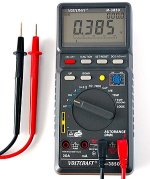It is interesting that when a TV or a VDU fails, the immediate assumption is its the "Flyback" Like the atom who said to the other, "I have lost an electron" and the other atom says "are you sure ?" yes, I'm positive.
How this flyback transformer blaming game came about in popular culture, I'm not entirely sure, folklore and internet videos never helped the case.
While it is true that flyback transformers can and do fail at times, more often than not it is another issue such as failure in the power supply distribution. And when that is not the case, the failure in the H output stage transistor (HOT) occurs far more frequently as a failure of the H output transformer itself. I know this from 50 years of repairing TV's and VDU's.
One thing that made the demonizing of flyback transformers happen, possibly was that as time went by there was a lot less money for service shops in repairing TV's and VDU's, they became cheaper disposable items, and it was easy to say to the customer, after the screen on their TV or VDU went black; "well its the Flyback you see and its not economical to replace it, and even if we wanted to we cannot source the part".
One of the very first transistor TV's that I acquired as a teenager in 1975, was stone dead with no picture and no EHT. The set was a decade old then. What had actually happened was that the H output transistor failed. It was not appreciated by many TV service people back then (who had mainly worked with tube TV's), that this transistor requires special properties, especially for a Germanium pnp part. It must have a very low storage time and very high collector voltage rating. There was no internet to search transistors, the transistor equivalents books were not helpful and a limited supply of any suitable part in NZ at that time. So somebody had fitted a typical TO-3 audio style Germanium part, so it just sat there heating up. They concluded that the Flyback Transformer was defective and deemed the set un-repairable. At that time there was only one or two transistor (aside from the Japanese original part) that would worked, the RCA 2N3731 and an AU prefix part available in the UK. It took me a while to get a 2N3731, and nothing was wrong with the flyback transformer, it still works to this very day, nearly 50 years later, the story about this Sanyo TV is here:
www.worldphaco.com/uploads/Sanyo_s_amazing_8-P2_Televsion_set_from_1962.pdf



